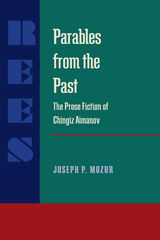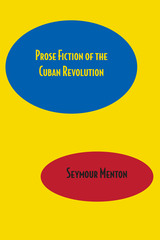
Chingiz Aitmatov was born in Kirghizstan in 1928 and published his first stories in the 1950s in both Russian and Kirghiz. He soon took his place as spokesman for the progressive wing of official Soviet Russian literature, striving for greater openness in Soviet letters and for a new approach toward diverse nationalities. Unlike many other writers, Aitmatov continued to flourish in the cultural tumult following the collapse of the communist state, being appointed to government posts by Gorbachev and becoming Soviet ambassador to Luxembourg in 1991.

Recipient of the Hubert Herring Memorial Award from the Pacific Coast Council on Latin American Studies for the best unpublished manuscript of 1973, Prose Fiction of the Cuban Revolution is an in-depth study of works by Cubans, Cuban exiles, and other Latin American writers. Combining historical and critical approaches, Seymour Menton classifies and analyzes over two hundred novels and volumes of short stories, revealing the extent to which Cuban literature reflects the reality of the Revolution.
Menton establishes four periods—1959–1960, 1961–1965,1966–1970, and 1971–1973—that reflect the changing policies of the revolutionary government toward the arts. Using these periods as a chronological guideline, he defines four distinct literary generations, records the facts about their works, establishes coordinates, and formulates a system of literary and historical classification. He then makes an aesthetic analysis of the best of Cuban fiction, emphasizing the novels of major writers, including Alejo Carpentier's El siglo de las luces, and José Lezama Lima's Paradiso. He also discusses the works of a large number of lesser-known writers, which must be considered in arriving at an accurate historical tableau.
Menton's exploration of the short story combines a thematic and stylistic analysis of nineteen anthologies with a close study of six authors: Guillermo Cabrera Infante, Calvert Casey, Humberto Arenal, Antonio Benítez, Jesús Díaz Rodríguez, and Norberto Fuentes. Several chapters are devoted to the increasing number of novels and short stories written by Cuban exiles as well as to the eighteen novels and one short story written about the Revolution by non-Cubans, such as Julio Cortázar, Carlos Martínez Moreno, Luisa Josefina Hernández, and Pedro Juan Soto.
In studying literary works to reveal the intrinsic consciousness of a historical period, Menton presents not only his own views but also those of Cuban literary critics. In addition, he clarifies the various changes in the official attitude toward literature and the arts in Cuba, using the revolutionary processes of several other countries as comparative examples.
READERS
Browse our collection.
PUBLISHERS
See BiblioVault's publisher services.
STUDENT SERVICES
Files for college accessibility offices.
UChicago Accessibility Resources
home | accessibility | search | about | contact us
BiblioVault ® 2001 - 2024
The University of Chicago Press









